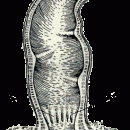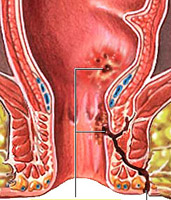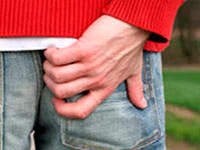In case of Crohn's disease, an instrumental examination is prescribed. Consider in this article, what kind of research are appointed, and that they include.
Content
Methods of tool diagnosis of Crohn's disease
Radiographic studies - irrigoscopy, serial radiography of the small intestine have important in the diagnosis of the disease.
Irrigoscopy
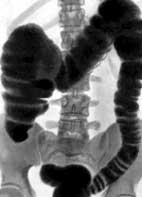 Irrigoscopy - X-ray study of the colon with filling it with X-ray-contrast suspension through the rear pass. This method of research must be preceded by rectoroscopy, since radiological examination methods do not allow to identify the pathology of the final rectum. Irrigoscopy allows you to reveal tumors, diverticulus, fistulas, damages of ravitia and stricture (narrowing) of colon. The method is absolutely painless and performed without anesthesia.
Irrigoscopy - X-ray study of the colon with filling it with X-ray-contrast suspension through the rear pass. This method of research must be preceded by rectoroscopy, since radiological examination methods do not allow to identify the pathology of the final rectum. Irrigoscopy allows you to reveal tumors, diverticulus, fistulas, damages of ravitia and stricture (narrowing) of colon. The method is absolutely painless and performed without anesthesia.
A water suspension of barium sulfate is used as an x-ray-contrast substance. X-ray-contrast suspension is warmed up to 33–35° and introduced into the colon with the help of the Bobrov apparatus through the rubber tube without a hard tip. Under x-ray control, the hot intestine is gradually filled with X-ray-concentrate suspension and survey and targeted images of all its departments in different positions of the patient. At the next stage, after removal from the colon of X-ray-feed suspension, the relief of the intestine mucosa is investigated. At the final stage of irrigoscopy, especially when a tumor tumor is suspected, the study is carried out with a dosage filling of the intestine by air, using the Bobrov apparatus (dual contrast irrigoscopy).
Endoscopic research methods
Endoscopic research methods (colonoscopy, rectoroscopy) are the most informative in the diagnosis of Crohn's disease with a colon lesion. Uneven thickening of the mucous membrane, the presence of narrow ulcers-cracks, the narrowing of the gossip - picture «Cobblestone bridge», characteristic of crown disease. However, with the initial stages of the disease and the formation of scar changes, such a typical picture cannot be obtained. Aiming biopsy made in endoscopic examination may confirm the diagnosis. Nevertheless, sarcoid-like granulomas are not always detected for Crohn's disease.
Ultrasonic examination of the abdominal cavity, computed tomography give valuable information in the diagnosis of abscesses, often being complications of Crohn's disease. In the presence of outdoor fistulas, fistulography.
Colonoscopy (fibrocolonoscopy)
 Colonoscopy is the most informative method of diagnosing colon diseases. In most cases, it allows you to explore the colon all over. During the colonoscopy, the condition of the colon mucosa is visually estimated, which allows you to identify benign and malignant tumors of colon, inflammatory diseases in the early stages,.D. Colonoscopy is produced using special devices - colonoscopes, which are a flexible tube with fiber optic. This procedure is sufficiently painful for the patient, so it is possible to conduct it under anesthesia.
Colonoscopy is the most informative method of diagnosing colon diseases. In most cases, it allows you to explore the colon all over. During the colonoscopy, the condition of the colon mucosa is visually estimated, which allows you to identify benign and malignant tumors of colon, inflammatory diseases in the early stages,.D. Colonoscopy is produced using special devices - colonoscopes, which are a flexible tube with fiber optic. This procedure is sufficiently painful for the patient, so it is possible to conduct it under anesthesia.
RectorOnoscopy (rectoscopy)
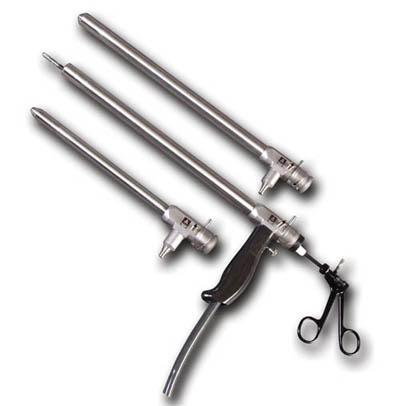 RectorOnoscopy is a mandatory view of the examination of the patient who addressed for help to a proctologist. It is carried out after a preliminary finger research of the rectum, to eliminate diseases that make the procedure of dangerous or impossible (stricture and deformation of the rectum).
RectorOnoscopy is a mandatory view of the examination of the patient who addressed for help to a proctologist. It is carried out after a preliminary finger research of the rectum, to eliminate diseases that make the procedure of dangerous or impossible (stricture and deformation of the rectum).
The relative opposition to the implementation of the procedure is also the presence of acute hemorrhoids, acute anal cracks and paraprojectite with pronounced pain syndrome. In this case, the reorganososcopy is better to spend after an anemia of an acute period. Rectoscope is a metal hollow tube with a length of 20-30 cm, which is connected to the illuminator using a flexible fiber. In the knee-elbow position, the rectoscope is introduced into the rectum of the patient and allows it to examine it and part of the sigmoid. The procedure is performed without anesthesia and last a few minutes.

